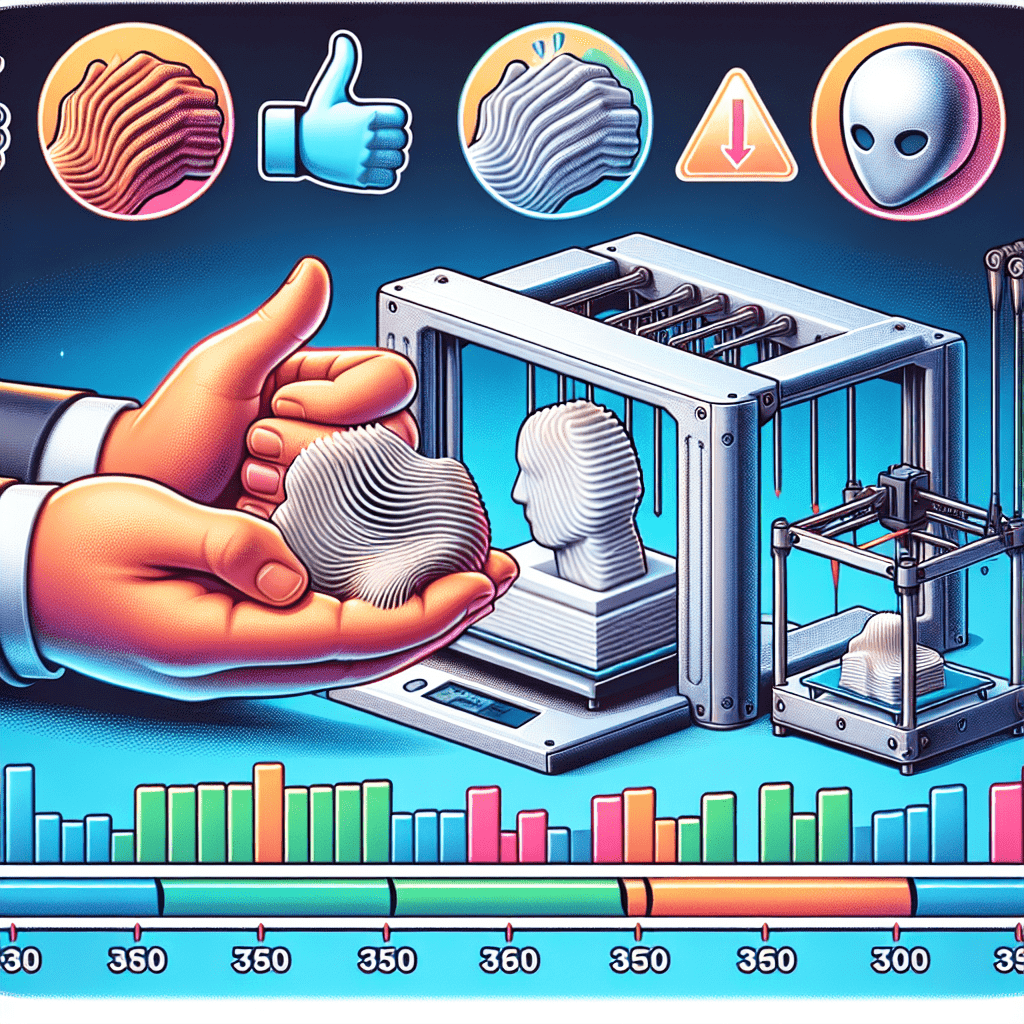Eliminate Ghosting and Resonance in Your 3D Prints
Table of Contents
Introduction
When it comes to 3D printing, achieving high-quality prints can often be a challenge. One common issue that many 3D printing enthusiasts face is ghosting and resonance, which can result in unwanted artefacts and imperfections in the final print. In this article, we will discuss what ghosting and resonance are, why they occur, and provide tips and tricks on how to eliminate them from your 3D prints.
What is Ghosting and Resonance?
Ghosting and resonance are two common issues that can occur during the 3D printing process. Ghosting, also known as ringing or rippling, refers to the appearance of unwanted artefacts on the surface of a print, typically in the form of wavy lines or bands. These artefacts are caused by vibrations in the printer’s frame or movement system, which can result in the print head not moving smoothly and accurately.
Resonance, on the other hand, occurs when the printer’s frame or components vibrate at a specific frequency, causing a build-up of energy that can result in unwanted vibrations and artefacts in the print. This can manifest as visible wobble or shaking in the print, particularly in tall and thin structures.
Why Do Ghosting and Resonance Occur?
Ghosting and resonance can occur for a variety of reasons, including:
– Inadequate or improper calibration of the printer’s settings, such as acceleration and jerk values
– Loose belts or pulleys in the printer’s movement system
– Inconsistent extrusion or filament flow
– Unstable or uneven printing surfaces
– Excessive printing speeds or accelerations
– Poor quality or insufficiently rigid printer frame or components
Tips and Tricks to Eliminate Ghosting and Resonance
To eliminate ghosting and resonance in your 3D prints, consider implementing the following tips and tricks:
1. Calibrate Your Printer Settings: Properly calibrating your printer’s settings, such as acceleration and jerk values, can help reduce vibrations and improve the overall print quality. Experiment with different settings to find the optimal values for your specific printer and filament.
2. Check and Tighten Belts and Pulleys: Loose belts or pulleys in the printer’s movement system can contribute to ghosting and resonance. Check the tension of your belts and tighten any loose pulleys to ensure smooth and accurate movement of the print head.
3. Optimize Extrusion and Filament Flow: Inconsistent extrusion or filament flow can lead to ghosting and resonance in your prints. Check your extruder and hot end for any clogs or obstructions, and adjust the extrusion multiplier or flow rate to achieve a consistent flow of filament.
4. Level Your Printing Surface: An unstable or uneven printing surface can cause vibrations and artefacts in the print. Ensure that your print bed is properly levelled and adjusted to create a smooth and stable base for your prints.
5. Reduce Printing Speeds and Accelerations: Excessive printing speeds or accelerations can exacerbate ghosting and resonance in your prints. Slow down the print speed and acceleration settings to allow the printer to move more smoothly and accurately.
6. Upgrade Your Printer Frame and Components: If you are still experiencing ghosting and resonance despite optimizing your settings, consider upgrading your printer frame or components to improve rigidity and stability. Upgrading to a more rigid frame or high-quality components can help reduce vibrations and improve print quality.
Conclusion
Ghosting and resonance are common issues that can affect the quality of 3D prints. By understanding the causes of these issues and implementing the tips and tricks mentioned in this article, you can effectively eliminate ghosting and resonance from your prints and achieve high-quality results. Remember to calibrate your printer settings, check and tighten belts and pulleys, optimise extrusion and filament flow, level your printing surface, reduce printing speeds and accelerations, and consider upgrading your printer frame and components to improve print quality. With these strategies in place, you can enjoy smoother and more precise 3D prints without the unwanted artefacts of ghosting and resonance.
FAQs
Can ghosting and resonance be completely eliminated from 3D prints?
While it may be difficult to completely eliminate ghosting and resonance, implementing the tips and tricks mentioned in this article can help reduce these issues and improve the overall quality of your prints.
Why do I see ghosting and resonance only in certain parts of my prints?
Ghosting and resonance may be more noticeable in certain parts of a print, such as tall and thin structures, due to the build-up of energy and vibrations in these areas. Adjusting your printer settings and optimizing your print parameters can help minimize these issues.
Will upgrading my printer’s components help eliminate ghosting and resonance?
Upgrading your printer’s frame or components can improve rigidity and stability, which may help reduce ghosting and resonance in your prints. However, it is important to also optimize your printer settings and calibration to achieve the best results.
